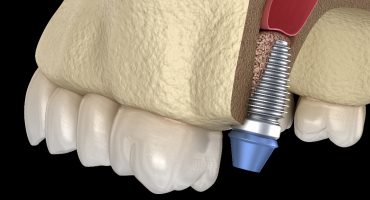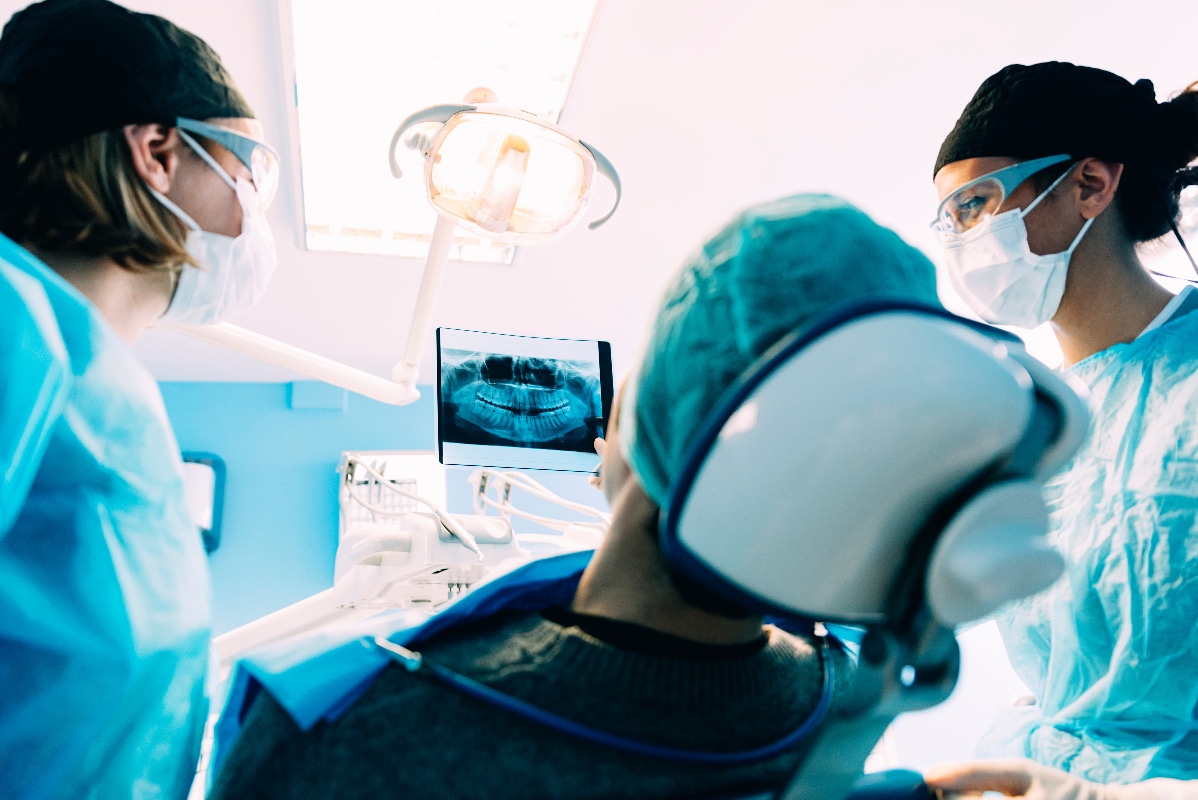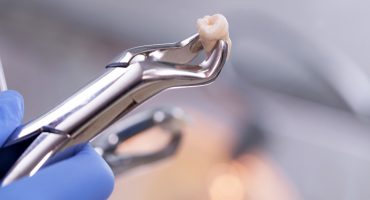Digital imaging techniques are becoming increasingly important in dentistry. They allow precisely manufactured, perfectly fitting dentures and facilitate the work of the process involved easier. An enormous benefit for patients is the predictability of the treatment.
What is navigated implantology?
Navigated Implantology uses virtual 3D navigation and three-dimensional imaging to better predict the anatomy of teeth and jaws. With the aid of a 3D planning software, the doctor can virtually prepare the procedure. Virtual 3D computer-based planning provides the physician and the patient with more precise statements, and therefore involves fewer surgical risks than conventional procedures. The physician can plan more complex and include anatomical and prosthetic aspects. Planning the operation will also be easier. Thanks to better predictions, most interventions can be performed minimally invasive and less stress on the patient.
The technology continues to grow. Many dental companies have adopted the navigation software of some specific systems and can offer nearly equivalent products. The surgical templates are either made on the basis of an X-ray template, manually or using the 3D print files. The software can also be used to implement implants without a guide template.
What happens during a navigated implantation?
First, a CT or DVT (digital volume tomography) image of the jaw is necessary. A CT template is created in the articulator (instrument used to simulate chewing movements in dental technology). The captured information is digitized and converted into three-dimensional imaging. Depending on the software used, the workflow is completely digital. With a server-based solution, all parties have easy access to the data. For example, the doctor and dental technician can discuss the correct position of the implant.
Thereafter, the physician plans the next steps. After setting the position, the dental technician uses stencil software to construct the rail design. The doctor releases it, then the required template is made with a 3D printer. Now the implantologist can glue the appropriate titanium sleeve in the prepared position. The implants can be inserted just as well with a drill key.
The insertion of the implant is then done with the use of drilling templates, the template system is only dispensed with metal sleeves. The template attached to the patient's jaw provides the ideal drilling position, angle and depth of the drill. Bridge scaffolds and bars are produced with CAM support and, in collaboration with the patient, dentist and dental technician, the optimal prosthesis is created. The dentist integrates the precise production parts minimally invasively in the patient's jaw.
Why navigated implantation makes sense
Digital technology has many advantages over analogue technology. It simplifies both the design of the care and the surgery and combines what belongs together. The computer-navigated implantology is designed so that the optimal implementation of the virtual planning can be achieved on the patient. Since the templates are designed to suit individual needs, they sit optimally. The system allows accurate predictions and thus the exact information of the patient.
The doctor can demonstrate to the patient in advance the result of treatment. He learns details about the course of therapy and the costs. Navigated implantology also makes the collaboration between dental technician and dentist easier. Preparations in the lab are also more efficient.
Even before the operation, the dentist defines the position, length and diameter of the implant. The three-dimensional images reveal how far out of the jaw it protrudes so that the dental technician can select suitable abutments (for example an angled abutment). Problems that are only recognizable in the conventional procedure on the implant model are virtually eliminated.
The main benefits at a glance:
- any existing CT / DVT can be used
- recordings do not have to be repeated
- Individually made templates fit better
- easier communication between physicians, prosthodontists and dental technicians
- efficient work processes through exact pre-planning
Some physicians see competition in the new technology and doubt that it can complement the doctor's human eye and medical experience. The digital implantology also uses the medical expertise of the doctor, but simplifies the collaboration between patient, dentist and dental technician. Ultimately, it is only for the benefit of the patient when corporations become more effective, thereby avoiding sources of error.
Does the navigated implantation have risks?
Even with this technology, complications can not be completely ruled out. However, it reduces these to a minimum. The more experienced the surgeon, the safer the procedure. Since computer-controlled implantation is also an operation, it is associated with typical surgical risks. Pain, swelling and bleeding are possible, but these can be treated and under control by cooling and painkillers. Damage to the neighboring teeth is almost impossible thanks to digital control. The healing process also depends on the age of the patient and his oral hygiene.
Weitere Beiträge

Sinus Lift
A stable and healthy jawbone is the prerequisite for a dental implant. Often, however, the bone has receded due to missing teeth and does not provide sufficient support for an implant. Accordingly, a sinus lift has the task of rebuilding the jawbone in the upper jaw.



